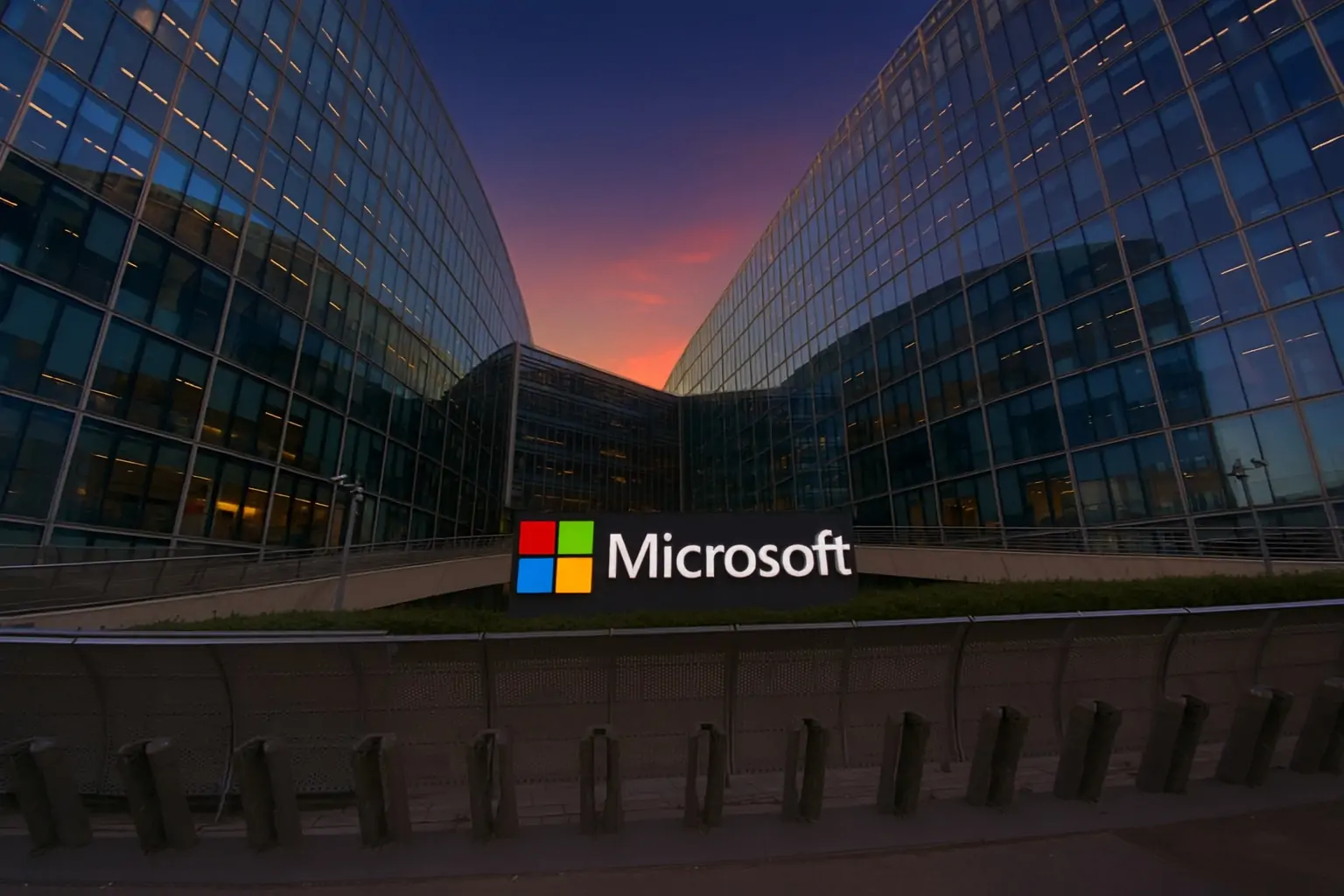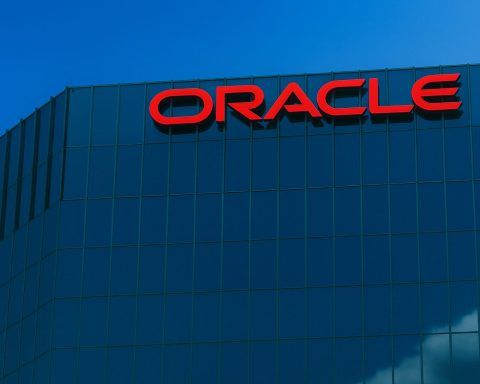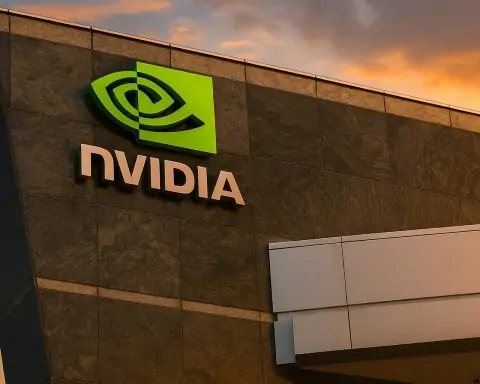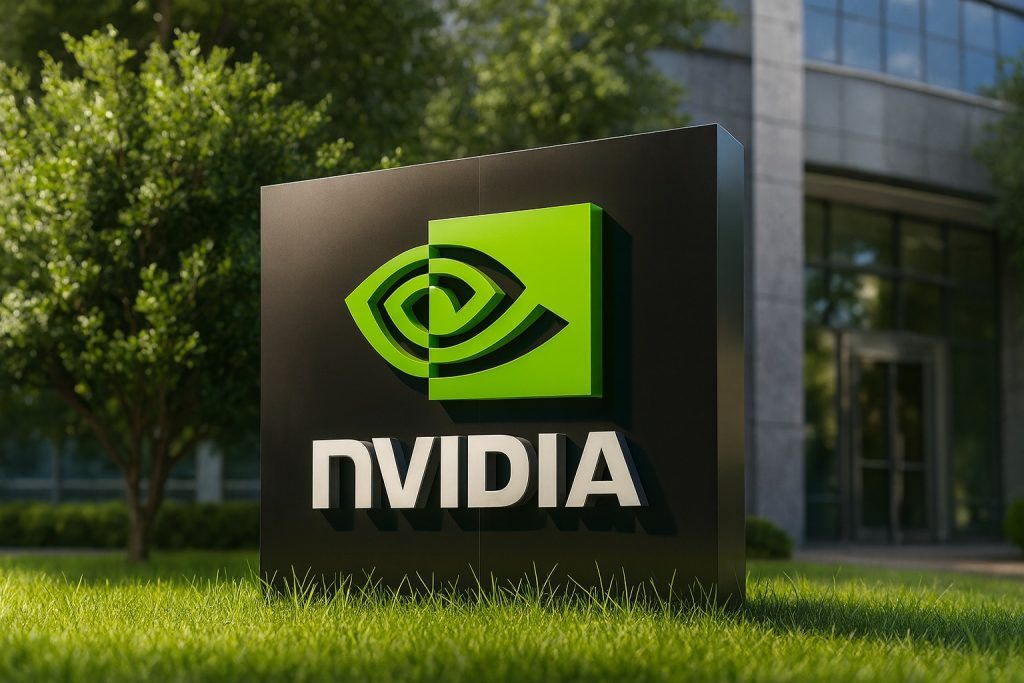Microsoft stock (NASDAQ: MSFT) ended Thursday’s session modestly higher, closing at $491.37, up about 0.9% on the day after trading in a tight range between roughly $490 and $494. [1] That bounce comes after a bruising few days in which the stock fell around 5% from last week’s levels amid rising skepticism about the economics of artificial intelligence and heavy data‑center spending. [2]
Despite the intraday recovery, Microsoft remains well below its late‑October highs near $553, and sits in the middle of its 52‑week range of $344.79 to $555.45. Over the past 12 months, MSFT is still up about 19%, keeping it firmly in the “Magnificent 7” mega‑cap tech club. [3]
Today’s narrative around Microsoft stock is being pulled in several directions at once:
- A high‑profile stake reduction by the Gates Foundation Trust, which sold about 65% of its Microsoft shares. [4]
- Conflicting Wall Street calls: a notable downgrade to “Hold” from Mizuho and a bearish AI‑capex thesis from Rothschild & Co Redburn versus fresh Buy reiterations and price‑target support from UBS, Stifel, TD Cowen and Evercore ISI. [5]
- A $15 billion AI deal around Anthropic that deepens Microsoft’s ties to both Anthropic and Nvidia and locks in up to $30 billion of Azure compute demand. [6]
- Dividend day: MSFT trades ex‑dividend today for its higher $0.91 per share payout, with the dividend payable on December 11. [7]
- A growing regulation and antitrust overhang, including new EU cloud “gatekeeper” probes and a U.S. class action over Microsoft’s OpenAI partnership. [8]
Below is a breakdown of what moved Microsoft stock today and what it could mean for investors.
Microsoft stock price today: MSFT edges higher after a rough AI‑driven week
As of the U.S. close on November 20, 2025, Microsoft shares:
- Closed: $491.37
- Change: +0.87% vs. yesterday’s $487.12 close
- Day’s range: roughly $490.13 – $493.57
- Volume: ~5.93 million shares, lighter than the recent average of about 5.9 million. [9]
Over the last week, however, MSFT has slid from the low‑$500s, with commentary from FXLeaders estimating a drop of about 5% as concerns mounted over rising AI‑related expenses and growing skepticism around the sustainability of the AI trade. [10]
Even after that pullback, Microsoft still commands a market value around $3.8–4.0 trillion and remains one of the best‑performing mega‑caps of 2025, having briefly crossed the $4 trillion mark when shares traded near $514 earlier this quarter. TechStock²+1
For context:
- 1‑year gain: ~19%
- 52‑week range: $344.79 – $555.45 [11]
In other words, today’s bounce looks more like a pause in a short‑term correction than a decisive change in trend.
Wall Street split: downgrades vs. bullish AI calls on the same day
One reason MSFT price action feels choppy: analysts are loudly disagreeing with each other.
The skeptics: Redburn and Mizuho turn cautious
Earlier this week, Rothschild & Co Redburn cut both Amazon and Microsoft to “Neutral” from bullish ratings, arguing that investors are still valuing the companies’ AI plans as if “cloud 1.0” economics applied. [12]
Key points from Redburn’s thesis:
- Generative AI infrastructure is far more capital‑intensive than legacy cloud: their analysis pegs GPU data center capex at around $40 billion per gigawatt of power, versus only about $10 billion in revenue per gigawatt, implying weaker returns. [13]
- AI chips may have shorter useful lives (around three years in their model), which would force hyperscalers like Microsoft to refresh hardware frequently, risking value‑destructive economics. [14]
- Hyperscalers’ pricing power is constrained: passing higher GPU costs to AI startups and enterprises is difficult without deepening customer losses, further squeezing margins. [15]
Separately, Mizuho downgraded Microsoft from a “strong‑buy” to “hold,” even while acknowledging the company’s strong Q1 results (EPS of $4.13 vs. $3.65 expected and revenue of $77.67 billion). [16] The firm highlighted valuation concerns and pointed to heavy insider selling, including sizable stock sales by CEO Satya Nadella and other executives, as a reason to step to the sidelines. [17]
The bulls: UBS, Stifel, TD Cowen and Evercore stay firmly on Team Microsoft
Against that cautious narrative, several major banks reaffirmed bullish views today:
- UBS reiterated a Buy rating with a $650 price target, after analyst Karl Kierstead spent two days at Microsoft Ignite 2025 and hosted CFO Amy Hood for an investor meeting. UBS came away more confident in Microsoft’s AI roadmap and demand pipeline. [18]
- Stifel reaffirmed a Buy rating and $640 target, citing strong early momentum for Copilot and growing evidence that AI features are driving upsell opportunities across Microsoft 365 and Azure. [19]
- TD Cowen also repeated a Buy with a $655 target, pointing to Microsoft’s “clear leadership” in enterprise AI and the rollout of new tools that embed AI directly into everyday workflows. [20]
- Evercore ISI has maintained an Outperform rating and $640 price target, having previously raised that target from $625 after what it described as an “impressive” AI‑driven earnings quarter. [21]
According to MarketBeat’s roundup, even after the Mizuho downgrade, overall sentiment on MSFT remains a “Moderate Buy” with 37 Buy ratings, 4 Holds and a consensus price target around $634—roughly 30% above today’s close. [22]
Takeaway: The Street is no longer unanimously euphoric, but bullish voices still dominate, and price targets remain far above current levels even as some analysts warn of an AI capex bubble.
Bill Gates’ foundation slashes its Microsoft stake by 65%
Another headline unsettling some retail investors today: Bill Gates’ charitable trust has massively reduced its exposure to MSFT.
Filings show the Gates Foundation Trust sold roughly 17 million Microsoft shares in Q3, shrinking its position by nearly 65%. The stake’s value dropped from around $13.9 billion to $4.76 billion, and Microsoft has fallen from the trust’s largest holding to just fourth place, behind Berkshire Hathaway, Waste Management and Canadian National Railway. [23]
A few nuances matter here:
- Gates has been steadily diversifying away from Microsoft for decades, largely to fund philanthropic activities and reduce portfolio concentration. [24]
- The Foundation Trust, not Bill Gates personally, is the seller; decisions there are driven by portfolio and mission considerations, not by day‑to‑day confidence in Microsoft’s business. [25]
- Even after the sale, the trust still holds billions of dollars worth of MSFT stock. [26]
From a market perspective, the sale is more of a sentiment headline than a fundamental shift. The transactions were executed in Q3 and have already been digested by the market; the news is that investors are seeing the 13F data and reacting now.
AI spending under the microscope: Anthropic deal, AI capex fears and Ignite news
A $15 billion Anthropic–Microsoft–Nvidia triangle
Today also brought fresh detail and global coverage of a sweeping AI partnership among Microsoft, Anthropic and Nvidia:
- Nvidia will invest up to $10 billion in Anthropic.
- Microsoft will invest up to $5 billion and already owns a large stake in OpenAI, Anthropic’s rival. [27]
- Anthropic has committed to buy about $30 billion of Azure compute capacity and contract additional capacity up to one gigawatt, effectively locking in massive demand for Microsoft’s cloud infrastructure. [28]
Analysts quoted by Network World note that this deal underscores how tightly intertwined the AI supply chain has become, with cloud providers, GPU vendors and model labs investing in and buying from each other. [29]
From a Microsoft‑stock angle, this cuts both ways:
- Bullish: It reinforces Azure as a core platform for leading AI models (Anthropic’s Claude on top of OpenAI’s models), potentially deepening long‑term cloud revenue. [30]
- Bearish: It also cements heavy, long‑duration capex commitments, feeding the very concerns that Redburn and others have raised about AI infrastructure becoming capital‑intensive, utility‑like and lower‑return. [31]
Ignite 2025: Copilot, Agent 365 and Azure Copilot agents
At Microsoft Ignite 2025 (running November 18–20), the company has been rolling out a new wave of AI announcements that help explain why bullish analysts remain enthusiastic:
- New Azure Copilot agents and AI infrastructure features aim to make Azure an “AI‑first” cloud, helping enterprises modernize their infrastructure and orchestrate complex AI workloads. [32]
- Microsoft 365 Copilot is integrating OpenAI’s Sora 2 video model into its Create experience, enabling users to generate short videos from text, swap stock footage with AI‑generated clips, and apply brand‑consistent voiceover and music tools—all squarely aimed at corporate marketing and creative teams. [33]
- Agent 365 is being pitched as a “control plane for AI agents” inside organizations, designed to let fleets of AI agents work securely with enterprise data, compliance constraints and existing business applications at scale. [34]
These Ignite announcements help explain why UBS, Stifel and others are comfortable backing Microsoft’s AI strategy with $640–$655 price targets, even as some investors worry about over‑investment. [35]
Regulation and legal risk: EU cloud gatekeeper probe and OpenAI antitrust suit
AI and cloud dominance come with growing regulatory baggage, and that overhang is part of today’s MSFT story.
EU Digital Markets Act: Azure faces gatekeeper scrutiny
On Monday, the European Commission opened three new cloud‑market investigations under the Digital Markets Act (DMA), two of which focus directly on Amazon Web Services and Microsoft Azure. [36]
Key details:
- Regulators are asking whether AWS and Azure should be designated as “gatekeepers” for cloud computing even though they don’t strictly meet the DMA’s size and user thresholds for that label. [37]
- A gatekeeper designation would subject Microsoft’s cloud to stricter interoperability and anti‑self‑preferencing rules and potential fines of up to 10% of global revenue for violations (rising to 20% for repeat offenses). [38]
- Critics in Europe have singled out Microsoft’s cloud licensing practices, particularly higher charges when customers run its software on rival clouds, as a priority issue for regulators. [39]
The investigations could run up to 12 months, with further time for final conclusions, so this is more of a medium‑term overhang than an immediate stock driver—but it reinforces the narrative that regulation is catching up with hyperscaler dominance.
U.S. class action over OpenAI partnership
In parallel, Microsoft faces a proposed U.S. antitrust class action over its multibillion‑dollar OpenAI partnership:
- The complaint, filed in San Francisco in October, alleges that Microsoft’s early deal with OpenAI effectively required OpenAI to run workloads exclusively on Azure, giving Microsoft outsized control over the compute needed to run ChatGPT and related services. [40]
- Plaintiffs argue that this arrangement artificially inflated prices for ChatGPT subscriptions by constraining supply, violating the Sherman Antitrust Act and reducing innovation and quality for consumers. [41]
This lawsuit comes on top of earlier FTC scrutiny of Microsoft’s $13+ billion OpenAI investment and a broader federal probe into the company’s AI partnerships and bundling practices. [42]
For MSFT investors, the upshot is that regulatory and legal risk is rising in tandem with AI upside—a key factor in how the market values long‑term earnings power.
Dividend and shareholder returns: ex‑dividend day for a bigger payout
Today is also an important income milestone for Microsoft shareholders.
Back in September, Microsoft’s board approved a 10% dividend increase, lifting the quarterly payout from $0.83 to $0.91 per share. The company set: [43]
- Record date: November 20, 2025
- Ex‑dividend date: November 20, 2025
- Payment date: December 11, 2025
At today’s closing price, that translates into an annualized dividend of $3.64 per share and a yield of roughly 0.7%, modest but backed by substantial free cash flow. [44]
Microsoft is also a heavy buyer of its own stock:
- In Q1 FY 2026, the company returned $10.7 billion to shareholders via dividends and share repurchases. [45]
- In FY 2025, it returned $9.4 billion in Q4 alone and generated full‑year revenue of $281.7 billion and operating income of $128.5 billion, up 15% and 17% year‑on‑year respectively. [46]
For long‑term investors, those numbers reinforce the view of Microsoft as a cash‑machine compounder even as it ramps AI spending.
Fundamentals still strong: cloud and AI remain the growth engine
Underneath the daily headlines, Microsoft’s core business remains robust:
- Microsoft Cloud revenue surpassed $168 billion in FY 2025, growing 23% year‑over‑year. [47]
- Azure alone has now exceeded $75 billion in annual revenue, growing about 34% year‑on‑year. [48]
- Recent earnings showed continued strength across Windows OEM, search and advertising, and Xbox, even as AI investments ramp. [49]
This is why some research outlets publishing 2025–2026 price forecasts still see upside for MSFT over the next year, even after the recent rally and pullback: the company has both high growth and high margins, a rare combination at its scale. [50]
What today’s Microsoft stock news means for investors
Putting it all together, here’s how the November 20, 2025 picture looks:
Bullish forces
- Strong cloud and AI fundamentals with double‑digit growth in Azure and Microsoft Cloud. [51]
- Deepening AI ecosystem via Anthropic, OpenAI and Nvidia partnerships, plus the Copilot and Agent 365 product stack showcased at Ignite. [52]
- A still‑bullish analyst consensus with many price targets in the $640–$655 range, far above today’s price. [53]
- Ongoing capital returns through dividends and buybacks, backed by robust cash flow. [54]
Bearish / cautionary forces
- Growing concern that AI infrastructure spend could become “value destructive” if returns don’t match the enormous capex, as highlighted by Redburn and echoed in broader market commentary. [55]
- Short‑term technical pressure after a ~5% weekly slide and a larger pullback from October highs near $550. [56]
- Rising regulatory and legal scrutiny in both the EU and U.S., which could ultimately constrain business practices or add compliance costs. [57]
- Sentiment impact from headlines like the Gates Foundation’s 65% stake reduction, even if the underlying reasons are largely portfolio‑management‑driven rather than a direct judgment on Microsoft’s prospects. [58]
For long‑term investors, today’s action reinforces a familiar dynamic with Microsoft:
The business continues to execute well, but the stock is constantly repriced as the market debates just how profitable and sustainable the AI boom will be, and how heavy the regulatory hand will become.
As always, whether MSFT fits your portfolio depends on your:
- Time horizon (years vs. months),
- Risk tolerance (comfort with regulatory and AI‑bubble volatility), and
- View on AI economics (will hyperscalers enjoy cloud‑like returns, or settle into a more utility‑style profile?).
This article is for information and education only and does not constitute financial advice or a recommendation to buy or sell any security. Consider speaking with a qualified financial adviser before making investment decisions.
References
1. www.investing.com, 2. www.fxleaders.com, 3. www.investing.com, 4. 247wallst.com, 5. www.businessinsider.com, 6. gulfnews.com, 7. news.microsoft.com, 8. www.ciodive.com, 9. www.investing.com, 10. www.fxleaders.com, 11. www.investing.com, 12. www.businessinsider.com, 13. www.businessinsider.com, 14. www.businessinsider.com, 15. www.businessinsider.com, 16. www.marketbeat.com, 17. www.marketbeat.com, 18. www.investing.com, 19. m.uk.investing.com, 20. www.investing.com, 21. www.gurufocus.com, 22. www.marketbeat.com, 23. 247wallst.com, 24. 247wallst.com, 25. 247wallst.com, 26. 247wallst.com, 27. gulfnews.com, 28. gulfnews.com, 29. www.networkworld.com, 30. www.networkworld.com, 31. www.businessinsider.com, 32. azure.microsoft.com, 33. news.microsoft.com, 34. www.microsoft.com, 35. www.investing.com, 36. www.ciodive.com, 37. www.ciodive.com, 38. www.computerweekly.com, 39. www.computerweekly.com, 40. www.reuters.com, 41. www.reuters.com, 42. www.mobileworldlive.com, 43. news.microsoft.com, 44. www.marketbeat.com, 45. www.microsoft.com, 46. www.microsoft.com, 47. finance.yahoo.com, 48. www.microsoft.com, 49. www.microsoft.com, 50. 247wallst.com, 51. finance.yahoo.com, 52. gulfnews.com, 53. www.investing.com, 54. www.microsoft.com, 55. www.businessinsider.com, 56. www.fxleaders.com, 57. www.ciodive.com, 58. 247wallst.com










